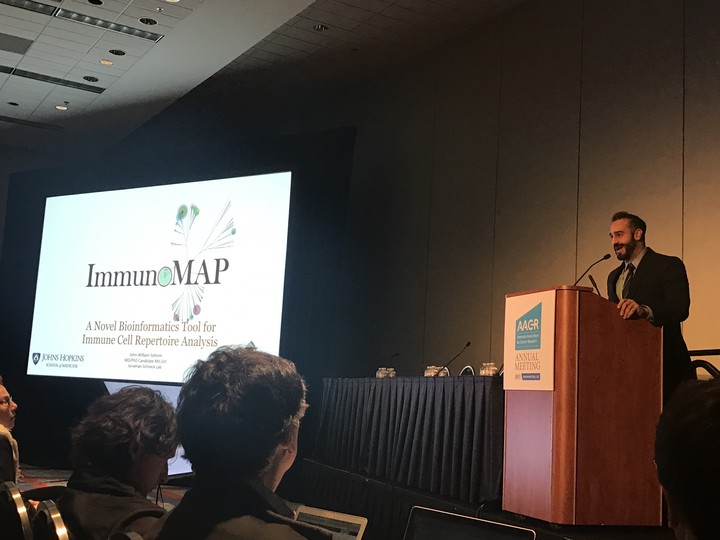ImmunoMap: A Novel Bioinformatics Tool for Immune Cell Repertoire Analysis

Abstract
Poster Background: There has been a dramatic increase in T-cell Receptor (TCR) sequencing spurred, in part, by the clinical demand in Immuno-oncology and technological advances in TCR sequencing. However, there has been little in the way of approaches to parse the data in a biologically meaningful fashion. The ability to parse this data to understand the T-cell repertoire in a structurally relevant manner has the potential to open new discoveries about how the immune system responds to insults such as cancer and infectious diseases. Methods: Here we describe a novel method to visualize and quantify TCR repertoire sequence diversity. This method includes metrics such as visualization of repertoire with: 1) weighted phylogenetic trees that display relatedness and frequency of the sequences; 2) dominant motif analyses identifying clusters of highly homologous sequences that contribute significantly to response and; 3) TCR diversity score measuring the average relatedness (by sequence homology) of all TCR’s in a sample. To demonstrate the power of the approach, we have applied it to understanding the CD8 T Cell response to model self (TRP2) and foreign (SIY) antigens in naïve and tumor-bearing (B16 melanoma) B6 mice. Additionally, this method was applied to tumor infiltrating lymphocytes, TIL, taken pre- and on-therapy, from patients undergoing Nivolumab (α-PD1) therapy for metastatic melanoma. Results: Analysis of the naïve CD8 response demonstrated a highly conserved (measured by the TCR diversity score) and less clonal response to SIY whereas the response to TRP2 was less conserved and highly clonal. Dominant motif analysis demonstrated highly rich motifs consisting of many homologous sequences in the SIY response but few sequences per motif in the TRP2 response. This may reflect the outcome of tolerance mechanisms to self-antigens. Presence of tumor demonstrated differential immune pressure on the TRP2 vs SIY response. Tumor primed novel SIY motifs but constricted the number of dominant motifs in the TRP2 response while additionally altering the sequence of the motifs. In patients undergoing α-PD1 therapy, we identified signatures in pre- and post-therapy TCR repertoires that correlated with clinical outcome response. Prior to therapy, patients whose dominant motifs were rich with many sequences responded favorably to checkpoint inhibition over those with less rich motifs. After four week on therapy, patients whose TCR repertoires became more conserved responded more favorably to PD1 treatment while those who did not respond had no change in their TCR diversity score. Conclusions: In summary, we have developed and demonstrated a novel method to meaningfully parse and interpret TCR repertoire data and have applied it to yield a novel insight of CD8 T Cell responses to different types of antigens in model systems as well as key characteristics of TIL repertoires from patients who respond clinically to α-PD1 therapy.